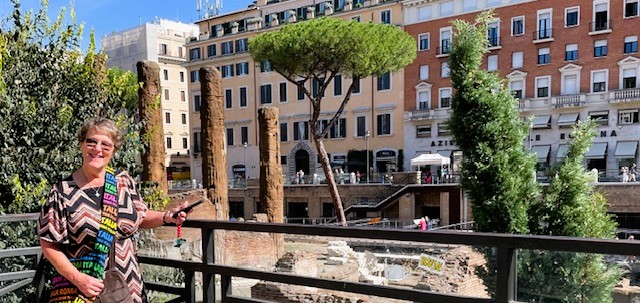
I looked forward to seeing the spot where Brutus killed Julius Caesar, but every time my daughter Tammie and I talked about going there, she kept talking about, “Santuario dei Gatti di Torre Argentina” which could be found at the same location. “It’s a cat sanctuary,” she excitedly informed me. I had the distinct impression she was more interested in seeing the cats than seeing the famous Emperor’s historical murder site. The incongruity of the two sites sharing the same space was lost on me.
My interest focused more on the 2,067-year-old crime scene. Not knowing what it would look like all these years later, I wondered with a chuckle, “Would there be a large ‘X’ marking the spot where it happened, and yellow tape cordoning off the area?”
When we arrived at Largo di Torre Argentina (Tower Square), the place managed to surprise me. It was a large open space the size of a city block, surrounded on all four sides by tall, solid buildings, some of which were ornately decorated. Within the walled-in block there were many ancient pillars and paving stones below street level, which dated back to the Curia of Pompey, the Roman senate building, the very spot where Caesar is believed to have been assassinated. Also contained within that block were the remains of four Roman temples built there in the centuries following the crime.



